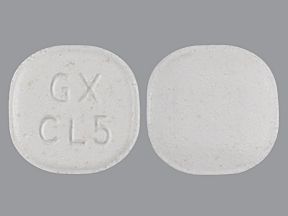Key takeaways
- Lamictal is a prescription drug that’s used to treat epilepsy and bipolar disorder.
- Your dosage of Lamictal may depend on the condition it’s being taken to treat and whether you are taking other medications for that condition.
- Lamictal comes in four different oral forms. It’s usually taken once or twice per day.
Lamictal is used to treat:
- certain kinds of seizures, with other drugs, in adults and some children with epilepsy
- focal onset seizures (also known as partial seizures) in adults and some children with epilepsy who have received specific medications in the past
- bipolar I disorder in adults
The active ingredient in Lamictal is lamotrigine. (An active ingredient is what makes a drug work.)
Lamictal belongs to a group of drugs called antiepileptics. It’s available in four different kinds of oral tablets.
This article describes the dosages of Lamictal, as well as its strengths and how to take it. To learn more about Lamictal, see this in-depth article.
When prescribing your dosage of Lamictal, your doctor will consider the condition it’s being used to treat, your age, and any other drugs you’re taking. In children between ages 2 to 12 years, the dosage of Lamictal also depends on body weight.
When you first start taking Lamictal, your doctor will slowly increase your dosage over several weeks or months until you reach the right dosage for you. The right dosage will depend on how your body responds to the medication as well as the recommended target dosage for your condition. The maximum dosage of Lamictal for adults is 500 milligrams (mg) per day.
If you and your doctor decide you will stop taking Lamictal, your doctor will slowly decrease your dosage over time before you completely stop taking it.
Keep reading for more details about Lamictal.
What are Lamictal’s forms?
Lamictal comes in four oral forms:
- tablet, which you swallow whole
- oral suspension tablet, which can be dissolved in water or fruit juice, swallowed whole, or chewed
- orally disintegrating tablet (ODT), which dissolves in your mouth
- extended-release (XR) tablet, which you swallow whole (XR tablets slowly release the drug into your body over a long period of time)
What strengths does Lamictal come in?
Each form of Lamictal comes in different strengths. The following table lists the available strengths by form.
| Tablet strengths | Oral suspension tablet strengths | ODT strengths | XR tablet strengths |
| • 25 mg • 100 mg • 150 mg • 200 mg | • 2 mg • 5 mg • 25 mg | • 25 mg • 50 mg • 100 mg • 200 mg | • 25 mg • 50 mg • 100 mg • 200 mg • 250 mg • 300 mg |
Your doctor will likely start you on a low dosage and adjust it over time to reach the right amount for you. They’ll ultimately prescribe the smallest dosage that provides the desired effect.
The following information describes dosages that are commonly used or recommended. But be sure to take the dosage your doctor prescribes for you. They’ll determine the best dosage to fit your needs.
Dosage for bipolar I disorder
Lamictal tablets, orally disintegrating tablets (ODTs), and oral suspension tablets can all be used to treat bipolar disorder in adults. (Lamictal extended-release tablets are not used to treat bipolar disorder.)
When you first start taking Lamictal, your doctor will slowly increase your dosage over several weeks until you reach the recommended target dosage.
If you’re taking Lamictal for bipolar disorder, your doctor will usually prescribe it with other medications to treat your condition. Lamictal’s dosage may be adjusted depending on your other medications.
See the following table for details of Lamictal’s recommended dosages for treating bipolar disorder. Dosages are given in milligrams (mg).
| Week | Lamictal dosage with valproate | Lamictal dosage* | Lamictal dosage† with carbamazepine, phenytoin, phenobarbital, or primidone |
| 1 | 25 mg every other day | 25 mg once per day | 50 mg once per day |
| 2 | 25 mg every other day | 25 mg once per day | 50 mg once per day |
| 3 | 25 mg once per day | 50 mg once per day | 50 mg twice per day |
| 4 | 25 mg once per day | 50 mg once per day | 50 mg twice per day |
| 5 | 50 mg once per day | 100 mg once per day | 100 mg twice per day |
| 6 | 100 mg once per day | 200 mg once per day | 150 mg twice per day |
| 7+ | 100 mg once per day | 200 mg once per day | up to 200 mg twice per day |
* When not taking valproate, carbamazepine, phenytoin, phenobarbital, or primidone.
† When not taking valproate.
After 16 weeks of treatment with Lamictal, your doctor may check whether continued treatment is necessary. If you and your doctor decide you will stop taking Lamictal, your doctor will decrease your dosage slowly over time before you completely stop taking it.
Dosage for seizures
The dosage of Lamictal for treating seizures also depends on the other medications you’re taking. Usually, doctors start with a low dosage and increase the dosage over several weeks until the target dosage is reached.
Typical dosages of Lamictal tablets, ODTs, and oral suspension tablets for treating seizures are in the following table.
| Lamictal dosage with valproate | Lamictal dosage* | Lamictal dosage† with carbamazepine, phenytoin, phenobarbital, or primidone | |
| Week 1 | 25 mg every other day | 25 mg once per day | 50 mg once per day |
| Week 2 | 25 mg every other day | 25 mg once per day | 50 mg once per day |
| Week 3 | 25 mg once per day | 50 mg once per day | 50 mg twice per day |
| Week 4 | 25 mg once per day | 50 mg once per day | 50 mg twice per day |
| Week 5+ | daily dose increased by 25 to 50 mg every 1 to 2 weeks | daily dose increased by 50 mg every 1 to 2 weeks | total daily dosage increased by 100 mg every 1 to 2 weeks |
| Target dosage | 100 to 200 mg per day | 225 to 375 mg per day, split into two doses | 300 to 500 mg per day, split into two doses |
* When not taking valproate, carbamazepine, phenytoin, phenobarbital, or primidone.
† When not taking valproate.
Typical dosages of Lamictal XR for treating seizures are in the following table.
| Lamictal XR dosage with valproate | Lamictal XR dosage* | Lamictal XR dosage† with carbamazepine, phenytoin, phenobarbital, or primidone | |
| Week 1 | 25 mg every other day | 25 mg once per day | 50 mg once per day |
| Week 2 | 25 mg every other day | 25 mg once per day | 50 mg once per day |
| Week 3 | 25 mg once per day | 50 mg once per day | 100 mg once per day |
| Week 4 | 25 mg once per day | 50 mg once per day | 100 mg once per day |
| Week 5 | 50 mg once per day | 100 mg once per day | 200 mg once per day |
| Week 6 | 100 mg once per day | 150 mg once per day | 300 mg once per day |
| Week 7 | 150 mg once per day | 200 mg once per day | 400 mg once per day |
| Target dosage | 200 to 250 mg per day | 300 to 400 mg per day | 400 to 600 mg per day |
* When not taking valproate, carbamazepine, phenytoin, phenobarbital, or primidone.
† When not taking valproate.
Lamictal XR can be used to treat seizures in children older than age 13 years. For children, Lamictal’s dosages are the same as the adult dosages.
Lamictal tablets, orally disintegrating tablets, and oral suspension tablets can be used with other medications in children ages 2 years and older to treat certain kinds of seizures. And these forms of Lamictal can be used alone in children ages 16 years and older to treat focal onset seizures.
For children older than age 12 years, Lamictal’s dosages are the same as adult dosages. For children ages 2 to 12 years old, Lamictal’s dosage is based on body weight. The dosage is also affected by other medications the child is taking.
The following table highlights the recommended dosages for children ages 2 to 12 years old. All dosages are in milligrams of Lamictal per kilogram of body weight per day (mg/kg/day). For reference, 1 kilogram is approximately 2.2 pounds (lb). Dosages are typically split in half and given twice per day. Your child’s doctor will round the dosage down to the nearest whole tablet.
| Lamictal dosage with valproate | Lamictal dosage* | Lamictal dosage† with carbamazepine, phenytoin, phenobarbital, or primidone | |
| Week 1 | 0.15 mg/kg/day | 0.3 mg/kg/day | 0.6 mg/kg/day |
| Week 2 | 0.15 mg/kg/day | 0.3 mg/kg/day | 0.6 mg/kg/day |
| Week 3 | 0.3 mg/kg/day | 0.6 mg/kg/day | 1.2 mg/kg/day |
| Week 4 | 0.3 mg/kg/day | 0.6 mg/kg/day | 1.2 mg/kg/day |
| Week 5+ | daily dose increased by 0.3 mg/kg/day every 1 to 2 weeks | daily dose increased by 0.6 mg/kg/day every 1 to 2 weeks | daily dose increased by 1.2 mg/kg/day every 1 to 2 weeks |
| Target dosage | 1 to 5 mg/kg/day | 4.5 to 7.5 mg/kg/day | 5 to 15 mg/kg/day |
| Maximum dosage | 200 mg per day | 300 mg per day | 400 mg per day |
* When not taking valproate, carbamazepine, phenytoin, phenobarbital, or primidone.
† When not taking valproate.
For children who weigh less than 30 kg, it may be necessary for your child’s doctor to increase the dosage above what is listed in the table.
The following are answers to some commonly asked questions about Lamictal.
Can Lamictal be used for depression, anxiety, or weight loss? If so, what’s the dosage?
Although Lamictal isn’t approved for managing depression, anxiety, or weight loss, it’s possible that it could be prescribed off-label for these conditions. With off-label use, doctors prescribe a drug for a purpose other than what it’s approved for.
Lamictal is a mood stabilizer and may be effective for treating certain types of depression, including unipolar depression and bipolar depression.
In addition, Lamictal is sometimes prescribed for panic disorder and may also help reduce stress symptoms in people with chronic anxiety.
People taking Lamictal may experience weight loss as a side effect, but Lamictal isn’t a weight loss drug. It would be unusual for a doctor to recommend Lamictal for this purpose.
Drug manufacturers don’t provide dosage recommendations for off-label drug uses. If you’re interested in learning more about Lamictal or other treatment options for depression, anxiety, or weight loss, talk with your doctor.
How long does it take for Lamictal to start working?
Lamictal starts working with the first dose you take. But you may only experience its effects once you’ve reached your target dosage. Since your dosage is slowly increased over several weeks when you start Lamictal, it may take some time before you reach your target dosage and experience the full effects of the drug.
Your doctor will be able to provide additional information about when you can expect to experience the effects of Lamictal for your condition.
Lamictal comes in four different oral forms that are all swallowed. Lamictal can be taken with or without food.
You’ll swallow Lamictal tablets and Lamictal extended-release tablets whole. If you have difficulty swallowing tablets, see this article for tips. Or you can discuss with your doctor whether one of the following forms would be better for you.
Lamictal orally disintegrating tablet (ODT) comes as a tablet that dissolves in your mouth. Place the tablet on your tongue and move it around your mouth. You can swallow Lamictal ODT with or without water.
Finally, Lamictal oral suspension tablets are tablets that dissolve in liquid. You can dissolve the tablet in a spoonful of water or diluted juice and swallow it. You should swallow all the liquid at once. With these tablets, you can also chew them or swallow them whole.
Is Lamictal used long term?
Whether Lamictal is used long term depends to some extent on the condition you’re taking it for.
Lamictal is usually prescribed as a long-term treatment for epilepsy. If you and your doctor determine that it’s safe and effective for your condition, you’ll likely take it long term.
Lamictal may be prescribed long term for bipolar disorder, but your doctor may review your symptoms after 16 weeks to determine whether you should continue taking it.
If you’re wondering whether you’ll be able to take Lamictal long term, your doctor can provide more information.
Take your missed Lamictal dose as soon as you remember. But if it’s almost time for your next dose, skip your missed dose and take your next dose at its regularly scheduled time. You should not take two doses of Lamictal at once. If you’re not sure whether you should take a missed dose or skip it, talk with your doctor or pharmacist.
If you need help remembering to take your dose of Lamictal on time, try using a medication reminder. This can include setting an alarm or downloading a reminder app on your phone.
Do not take more Lamictal than your doctor prescribes, as this can lead to harmful effects. Taking too much Lamictal can be life threatening.
Possible overdose effects
Possible harmful effects caused by an overdose can include:
- problems with muscle control
- uncontrolled and rapid movement of one or both eyes
- seizures
- drowsiness
- electrical problems in the heart, such as left bundle branch block
- coma
An overdose of Lamictal can also lead to death.
What to do in case you take too much Lamictal
Call your doctor right away if you think you’ve taken too much Lamictal. You can also call 800-222-1222 to reach America’s Poison Centers or use its online resource. But if you have severe symptoms, immediately call 911 (or your local emergency number) or go to the nearest emergency room.
Disclaimer: Healthline has made every effort to make certain that all information is factually correct, comprehensive, and up to date. However, this article should not be used as a substitute for the knowledge and expertise of a licensed healthcare professional. You should always consult your doctor or another healthcare professional before taking any medication. The drug information contained herein is subject to change and is not intended to cover all possible uses, directions, precautions, warnings, drug interactions, allergic reactions, or adverse effects. The absence of warnings or other information for a given drug does not indicate that the drug or drug combination is safe, effective, or appropriate for all patients or all specific uses.









